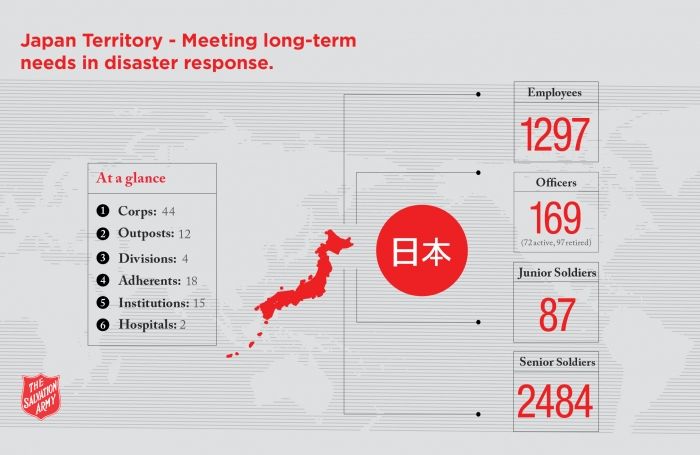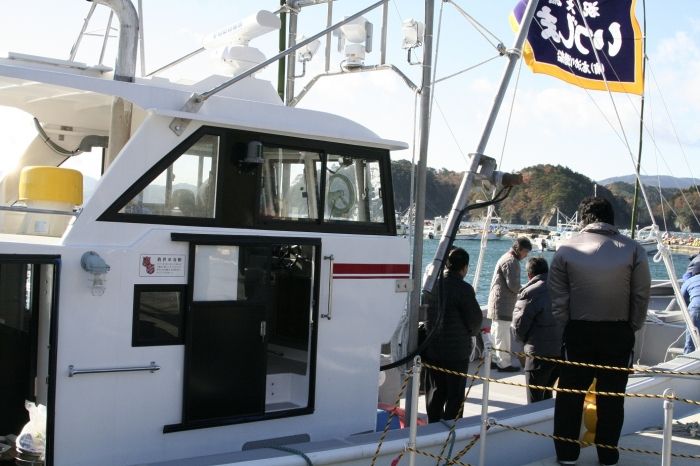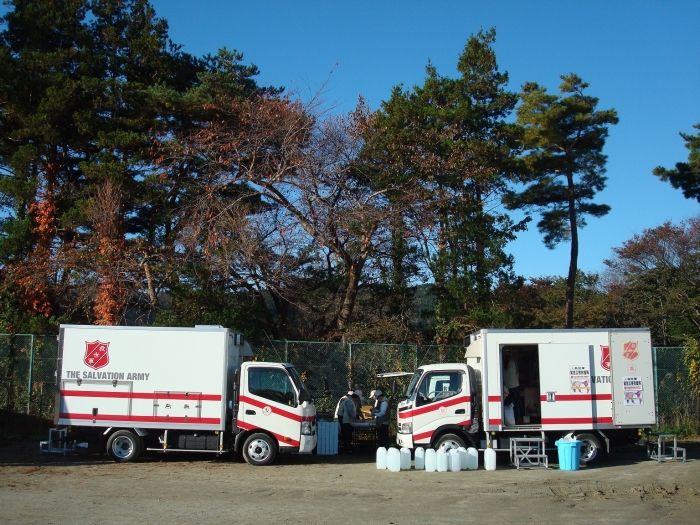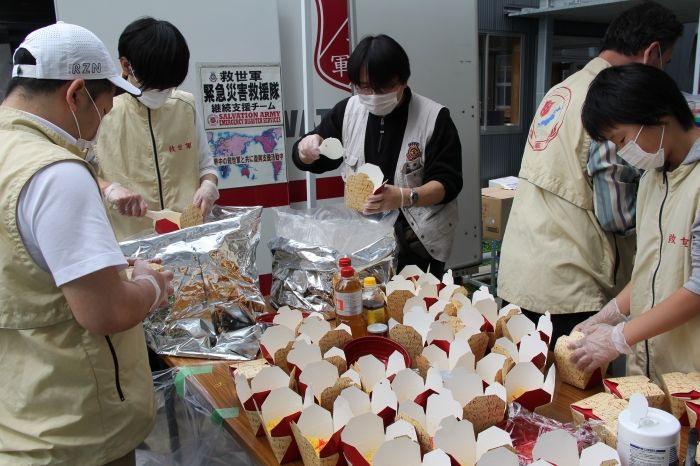Global Focus: Japan Territory - Meeting long-term needs in disaster response

Global Focus: Japan Territory - Meeting long-term needs in disaster response
The Salvation Army helped provide emergency relief to thousands of people following the March 2011 earthquake and tsunami.
The Salvation Army operates from its headquarters in Japan’s capital, Tokyo.
The Army also administers two hospitals, four children’s homes, five day nurseries, three men’s residences, two women’s residences, two residential rehabilitation centres, two homes for the aged, a hostel and two senior citizens’ housing and care centres.
Since the devastating earthquake and tsunami in March 2011, The Salvation Army in Japan has focused heavily on relief work and meeting long-term needs. It has had many opportunities to show God’s love and care to people in need through this extended period of recovery, offering practical help and pastoral care.
With 98 percent of Japan’s 127 million people having Shinto and Buddhist beliefs, Japanese Salvationists have been focusing on sharing the gospel with family members, encouraging them to seek God.
The Salvation Army in Japan is known as Kyuu-Sei-Gun (Save-World-Army).
Australian officers, Captains Daniel and Melissa Templeman Twells, are currently serving in Japan. Read their story here.
AT A GLANCE

HISTORY
In 1895, a group of 13 pioneer British officers, under the leadership of Colonel Edward Wright, arrived in Yokohama, Japan, to start the work of The Salvation Army.
In spite of great difficulties, including wars and economic depression, the ministry germinated and grew.
Gunpei Yamamuro, a young man who, as a student, had experienced conversion and recognised the need for practical Christianity, and sought to express it, heard about the arrival of The Salvation Army, and was introduced to Colonel Wright. Gunpei contributed much to the early development of The Salvation Army in Japan, became the first commissioned Japanese officer and Japanese Territorial Commander. [Commissioner] Gunpei Yamamuro also wrote The Common People’s Gospel, which has been reprinted more than 500 times.
Aizo Muramatsu, a former parliamentarian who had served time in prison where he was converted to Christianity, was also instrumental in the early work of the Army. He and his wife became officers, serving the many mistreated women with whom the Army was working at the time.
In response to The Salvation Army’s challenge to legal prostitution, which included a visit to the prostitutes’ district to distribute a special edition of the War Cry that offered help and protection for women, laws were changed and The Salvation Army became a visible, well-known and respected movement in the country.
The first ambulance in Japan was used at the Booth Memorial Tuberculosis Sanatorium in 1923.
During World War Two, The Salvation Army was forced to cut all its international links, and endured great suffering. Brigadier Charles Davidson reopened the work after the war.
The Salvation Army has a special relationship with the imperial family of Japan and, except for General George Carpenter who was General during WWII, all Salvation Army leaders have been granted an audience with the emperor and empress.
The territory is now in its fourth and fifth generations, and is fully self-supporting.
TSUNAMI RELIEF
On 11 March 2011, a magnitude-9 earthquake shook north-eastern Japan, unleashing a savage tsunami that killed almost 16,000 people, with more than 2500 still missing. More than 230,000 homes were destroyed, 561 square kilometres of the country was flooded, and the Fukushima Daiichi Nuclear Power Plant experienced a cooling system failure, resulting in a level-7 nuclear meltdown.
The effects of the earthquake were felt around the world, from Norway's fjords to Antarctica's ice sheet. Tsunami debris continued to wash up on North American beaches two years later.
Japan is still recovering. The tsunami disaster relief that commenced in March 2011 has stepped into a new phase of long-term support with the opening of a project office in Onagawa. This office will administer research, development and the monitoring of six projects for school children, senior citizens, people experiencing intellectual challenges and women.
The Salvation Army also facilitated the building of temporary shops in villages to stimulate local economies.
In addition to the shopping centre, The Salvation Army in Japan, supported by The Salvation Army World Service Office, assisted Onagawa’s local fisherman’s union – the lifeblood of the community, as commercial fishing and related industries accounted for 85 percent of jobs.
 The Salvation Army in Japan has helped repair, and provide new, fishing boats, enabling entire communities to resume work and rebuild their lives.
The Salvation Army in Japan has helped repair, and provide new, fishing boats, enabling entire communities to resume work and rebuild their lives.
The focus areas included productive use of remaining boats, as well as providing vehicles, equipment and new boats to be prepared for future fishing seasons. The Army also helped local schools and neighbourhoods with equipment and supplies to better prepare for future disasters. Similar efforts were established in other hard-hit coastal towns, such as Ofunato and Mininamisanriku.
The union also needed a place to process their marine harvest prior to shipping. To this end, The Salvation Army provided temporary tents as operating centres in 15 port locations. The Salvation Army also replaced four two-tonne trucks (pictured below) used to carry the products such as oysters, seaweed and scallops from the pier to processing stations to market. The trucks also carried tools and machines to help rebuild and organise fishing nets and farms.

A representative from the Kesennuma Fishermen’s Union summarised the importance of the help they received saying, “We called on The Salvation Army because very few people were able to help us. We use the equipment donated by The Salvation Army every day to harvest oysters, seaweed and other seafood. The union members are so grateful because it allowed us to go back to work.”
 The Salvation Army responded quickly to people's immediate needs after the Kumamoto earthquake in April 2016.
The Salvation Army responded quickly to people's immediate needs after the Kumamoto earthquake in April 2016.